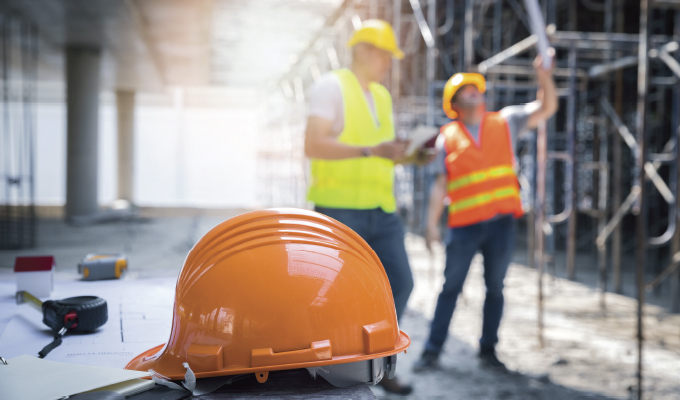Workplace injuries are prevalent in many occupations, and construction is no exception. Workers in this sector have to handle tasks that increase their risk of injury, often leading to lost work days and hefty medical bills. With the construction industry a vital part of our economy, it’s crucial to keep employees of this sector safe and healthy. That is possible with the help of ergonomic solutions. These solutions will help prevent work-related health issues and allow employees to perform their tasks safely.
WHAT IS ERGONOMICS?
Ergonomics is the science that ensures your employees’ capabilities match their equipment and working environment.
Injury prevention programs suggest personalized solutions based on the needs of each industry to prevent workplace injuries. Apart from that, ergonomic solutions can help:
- Improve productivity and quality of work
- Make it easier to perform demanding job tasks
- Create a safe and healthy workplace
- Boost morale and create a happy working environment
- Reduce medical costs and workers’ compensation claims
ERGONOMIC RISK FACTORS
Here are ergonomic risk factors in the construction industry that ergonomic solutions can address.
Awkward postures. Many construction workers perform their tasks with habitual movement patterns and postures that may not be serving their health for the longer-term. These poor postures can result in different back, neck, and shoulder injuries.
Repetition and Static Posture. Repetition involves repeating the same task with a similar range of motion for more than 2 hours which can increase the risk of local tissue strain or injury. Static posture is when the workers maintain one alignment for a long time. It can limit blood circulation in the muscles and cause aches and cramps.
Vibration. Any vibration that enters the body from power tools can put pressure on the tissues of a worker’s hands, arms, and fingers.
Force. Demanding tasks that require high muscle power introduce force as a risk factor. Using the body to apply extreme force can put stress on the muscles.
Contact Stress. Contact stress occurs when an external object puts pressure on soft body tissues and can lead to localized injury and nerve damage.
Extreme Temperature. Extreme heat can lead to fatigue, while extreme cold can lower sensitivity and lead to a lack of bodily harmonization.
INDUSTRY INJURIES
The above risk factors will not only cause physical discomfort but lead to the following musculoskeletal disorders and more in the long run, such as back pain, tendinitis, sprains and strains, rotator cuff syndrome, and carpal tunnel syndrome.
GENERAL ERGONOMIC SOLUTIONS
Ergonomic programs provide these general solutions to create a safer work environment and proactively prevent injuries.
Workplace Modifications. Professional ergonomists know how to inspect a worksite for hazards and safety issues. Once they identify these issues with on-site inspections, they recommend modifications you can make to the equipment layout, material flow, and more to eliminate the risk factors.
Stretching Programs. A simple 3 minute stretching routine before work and between shifts can prepare the body for the physical aspects of a job. Personalized warm-up exercises created based on the needs of construction workers can improve balance, eliminate fatigue, and lower the chances of musculoskeletal injuries.
Athletic Training. Proper body movements and mechanics are essential to employee safety, especially in a physically-challenging industry like construction. Ergonomists can instruct workers on correct body forms to reduce pressure on their muscles and prevent avoidable injuries.
Handling Techniques. Construction workers are always handling technical equipment and lifting heavy objects that take a toll on their bodies. By learning the proper handling and lifting techniques, they can lower the pressure on their bodies and stay safe at work.
Early Intervention. To stay ahead of injuries and take a proactive approach to prevention, workers should learn to identify the early symptoms. Employers must provide the necessary resources to tackle minor musculoskeletal issues and fatigue before they become painful disorders with costly treatments.
INJURY-SPECIFIC REMEDIES
Apart from the general solutions, there are injury-specific ergonomic solutions that can address particular work-related issues. Here are the ergonomic remedies to some common injuries in the construction industry.
Lacerations. Lacerations are deep cuts on the skin of hands and fingers. They are one of the most common injuries among construction workers, costing thousands of dollars in compensation claims each year. Ergonomic Solution: Providing employees with cut-resistant gloves and proper cutting tools can protect their skins from lacerations and keep them safe while on the job.
Upper Extremity. Upper extremity injuries such as sprains in wrists and joint pains can limit employees’ working abilities. Ergonomic Solution: By providing proper materials and equipment like extension poles and spring-assisted finishing tools, employers can reduce upper extremity injuries.
Lumbar Spine. Lumbar spine injuries mainly result from working in improper postures for long. Body positions like bending, twisting, kneeling, or squatting can lead to these injuries and put the body under stress. Ergonomic Solution: Once again, the right tools can eliminate the need for the body to work in these awkward postures and reduce the stress on the arms, neck, and shoulders.
Eyes. Eye injuries such as inflammation and abrasion can be very challenging for the workers and keep them away from work for days due to the area’s sensitivity. Ergonomic Solution: Protection gears like goggles and face shields are crucial. Employees must wear them when necessary to keep their eyes safe.
CLOSING THOUGHTS
Accidents will happen in every workplace. However, ergonomic solutions can reduce the risk of these injuries and their respective costs. With safety ensured, employees can work better and thrive at their jobs.
About the Author:
Jordan McDowell is a writer and content strategist. He specializes in manufacturing and often covers workplace safety, but also enjoys writing about the automotive industry and the great outdoors.
Modern Contractor Solutions, October 2022
Did you enjoy this article?
Subscribe to the FREE Digital Edition of Modern Contractor Solutions magazine.



